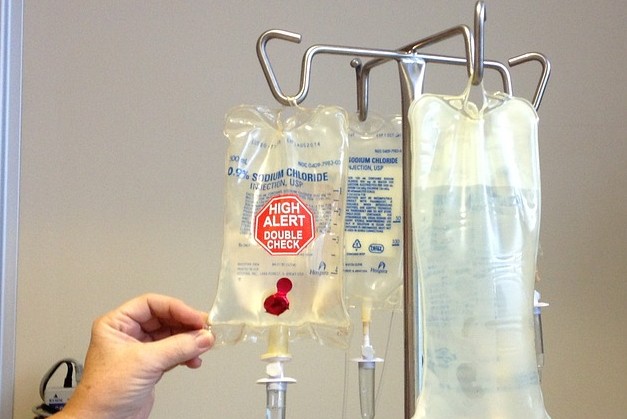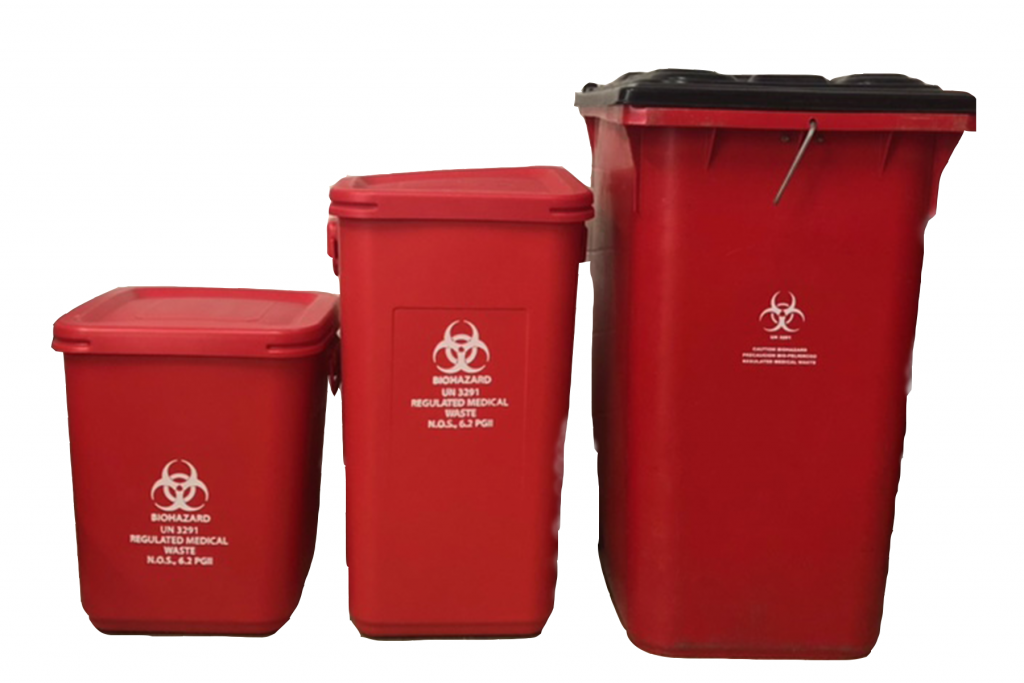Your Trusted Partner: Medical Waste Removal Services Tailored to Your Requirements
Wiki Article
The Relevance of Appropriate Medical Waste Disposal: An Overview for Medical Care Facilities
Correct clinical waste disposal is a vital facet of medical care center management, making sure the safety and security and health of patients, staff, and the environment. From understanding the different groups of medical waste to complying with regulatory needs, healthcare centers have to adopt reliable waste partition techniques and pick proper disposal approaches.Recognizing Clinical Waste Categories
Recognizing clinical waste categories is essential for proper disposal in medical care centers. Clinical waste is a broad term that encompasses different kinds of waste produced in health care settings, such as centers, healthcare facilities, and labs. Categorizing clinical waste assists ensure that it is taken care of, saved, and disposed of safely and in conformity with appropriate guidelines.There are several categories of clinical waste that medical care centers need to be familiar with. These groups consist of contagious waste, sharps waste, pharmaceutical waste, chemical waste, and radioactive waste (medical waste disposal services with WasteX). Each classification has details attributes and needs various disposal techniques to lessen the danger of harm to healthcare workers, patients, and the setting
Contagious waste, for instance, refers to lose infected with potentially infectious products, such as blood, body liquids, and cells. Pharmaceutical waste consists of ended or unused medicines, while chemical waste consists of hazardous chemicals used in clinical treatments.
Compliance With Regulatory Requirements
Health care facilities must make sure compliance with regulatory needs for appropriate clinical waste disposal. Governing bodies, such as the Environmental Protection Agency (EPA) and the Occupational Security and Health And Wellness Administration (OSHA), have established standards and laws to safeguard public health and wellness and the environment. These guidelines describe the correct handling, storage, transport, and disposal of clinical waste.Conformity with regulative requirements is important for healthcare centers to prevent lawful charges, reputational damages, and prospective harm to human wellness and the atmosphere. Failing to abide by these policies can result in fines, legal actions, and even the suspension or revocation of running licenses.
To ensure conformity, health care facilities must develop detailed waste management programs that include team training, proper waste segregation, and making use of suitable containers and labels. Regular audits and inspections should additionally be performed to determine any kind of non-compliance concerns and address them immediately.
It is vital for medical care facilities to remain up to day with changes in regulations and upgrade their waste management methods appropriately. This can be accomplished by actively checking updates from regulatory bodies and taking part in training programs and workshops.
Applying Effective Waste Segregation Practices
To make sure proper medical waste disposal, health care centers must execute efficient waste segregation techniques. Waste partition is a crucial step in the general waste monitoring procedure, as it aids minimize the danger of infection, stops cross-contamination, and makes sure the secure disposal of different kinds of waste. Effective waste segregation techniques entail dividing clinical waste into different classifications based on its qualities and potential threats.One usual technique is the segregation of sharps waste, such as needles and scalpels, from various other kinds of medical waste. Sharps waste ought to be placed in puncture-resistant containers to avoid injuries and prospective infections. In addition, hazardous waste, such as chemicals and pharmaceuticals, need to be separated from basic clinical waste to avoid environmental contamination.
Proper labeling and color-coding of waste containers are essential for reliable waste partition. Clear and noticeable tags need to be put on each container to suggest the kind of waste it has and any kind of special delivery requirements - medical waste disposal services with WasteX. In addition, color-coding can be utilized to set apart in between different waste groups, making it simpler for healthcare personnel to get rid of and determine of waste correctly
Routine training and education and learning for health care staff is vital for the effective implementation of waste segregation practices. Personnel must be educated on the different waste classifications, correct partition techniques, and the significance of adhering to waste management visit our website methods. This will certainly aid guarantee compliance and consistency in waste segregation techniques throughout the facility.
Deciding On Appropriate Disposal Methods
Correct option of suitable disposal techniques is crucial in guaranteeing the eco liable and risk-free management of clinical waste in healthcare facilities. Health care centers produce a range of medical waste, including sharps, infectious waste, pharmaceutical waste, and chemical waste - medical waste removal near me. Each sort of waste needs details disposal methods to lessen the risk of contamination, injury, and environmental damageOne usual disposal technique for medical waste is incineration. Incineration includes the regulated burning of waste at high temperature levels.

Chemical disinfection is an additional approach utilized for particular sorts of medical waste, such as pharmaceutical waste. This approach utilizes chemicals to counteract or destroy impurities. It is important to pick chemicals that are safe and ecologically friendly.
In some instances, landfill disposal might appropriate for non-hazardous medical waste (medical waste disposal services with WasteX). Nonetheless, proper partition and product packaging are vital to stop leakage or contamination.
Eventually, healthcare facilities must meticulously review the features of their clinical waste and select suitable disposal methods that prioritize safety and security, environmental management, and governing compliance. Normal training and tracking are necessary to guarantee that healthcare team complies with appropriate disposal procedures.

Training and Educating Personnel on Proper Disposal Treatments
Staff education and learning and training play a critical function in ensuring the appropriate disposal of medical waste in medical care facilities. It is essential that all employee, including medical professionals, registered nurses, specialists, and support team, receive detailed training on proper disposal procedures. This training needs to cover the different sorts of clinical waste, their prospective hazards, and the ideal methods for managing, setting apart, and taking care of them.One of the main objectives of personnel education and training is to make certain that all healthcare professionals comprehend the relevance of appropriate disposal procedures and the possible effects of inappropriate waste administration. They need to be familiar with the risks associated with clinical waste, such as the transmission of infections and the contamination of the environment. medical waste removal near me. By understanding these dangers, personnel will certainly be much more determined to comply with correct disposal protocols and take the necessary safety measures to shield themselves, their associates, and the neighborhood
Educating must additionally cover using personal protective tools (PPE) and the proper methods for managing clinical waste. Personnel participants should be educated on just how to recognize and segregate different sorts of waste, such as sharps, transmittable waste, and harmful chemicals. They need to additionally be trained on the proper usage of waste containers, such as sharps containers and biohazard bags, along with the importance of labeling and securing these containers correctly.
In addition, personnel education and learning and training need to include normal updates and refresher course programs to make certain that health care specialists remain notified concerning the most recent laws and best methods in medical garbage disposal. This ongoing education is essential to keep a high level of understanding and compliance amongst team member.
Conclusion
In verdict, correct medical waste disposal is of utmost value for health care centers. More about the author Recognizing the different groups of clinical waste and complying with regulatory requirements makes certain the safety and wellness resource of both health care workers and the basic public.From understanding the different groups of medical waste to complying with governing requirements, medical care centers need to take on reliable waste segregation techniques and choose appropriate disposal approaches. These categories include transmittable waste, sharps waste, pharmaceutical waste, chemical waste, and contaminated waste.To guarantee appropriate clinical waste disposal, healthcare centers have to implement efficient waste partition practices. Waste partition is a vital action in the total waste administration process, as it helps minimize the danger of infection, avoids cross-contamination, and makes certain the safe disposal of different types of waste. Medical care facilities generate a range of clinical waste, including sharps, infectious waste, pharmaceutical waste, and chemical waste.
Report this wiki page